





There are many plants that either look like cacti or are called cacti, but are NOT cacti. For those who don't know what I am talking about, this article is for you.
Recently I wrote an article about cacti that just don't look ‘cactus-like'. And now, after seeing so many comments and questions about 'cacti' that actually aren't really cacti on the plant identification forum and the cactus and succulent forum, I thought I'd write a short article about plants that look like cacti, but aren't.
The ‘typical' cactus is either columnar, barrel or pancake-shaped with lots of spines all over it. If you read my other article you will see that not all cacti have spines or always look anything like these typical cacti. Conversely, not every plant that has a succulent body covered with spines is a cactus. Members of the family Cactaceae are, with one exception, New World plants (from the Americas). Most are plants with stout, succulent bodies that have evolved to survive in arid, often hot locations. These plants have evolved spines to protect their soft, delicate bodies from predation and sometimes from excessive solar radiation. There are a number of Old World plants that have filled similar ecologic niches to cacti and some even have, through convergent evolution, ended up looking a bit like cacti. Many of these plants are even called cacti in their native countries.
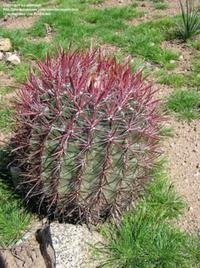
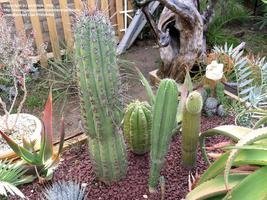
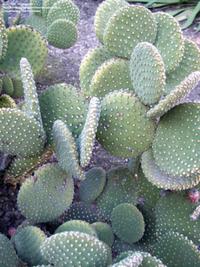
Typical cactus shapes and spines (Ferocactus gracilis, group of columnar cacti, and Opuntia microdasys var albospina
The primary culprits in this confusion are members of the family Euphorbiaceae, a family that has representatives all over the world. However most of the ‘cactus-looking' forms are African plants. Many Euphorbias are spiny and have thick, stout bodies, or are columnar, frequently leafless and are roughly similar in appearance to many cactus species. There is even a species of Euphorbia called Euphorbia cactus. Below are some examples of these ‘cactus-like' plants.
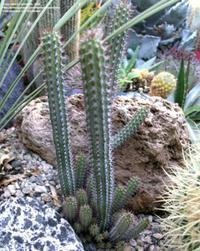
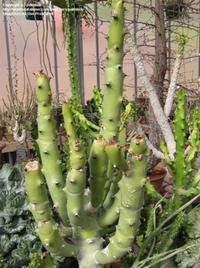
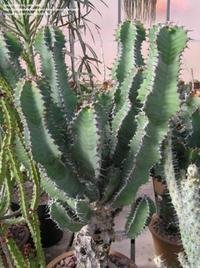
Several cactus-like Euphorbias: Euphorbia baioensis (this one had me fooled for a few years, too); Euphorbia caudicifolia and Euphorbia cactus
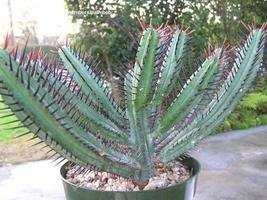
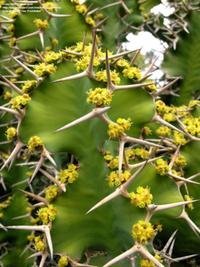
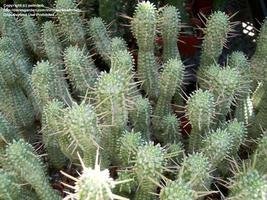
Euphorbia enopla Euphorbia ferox Euphorbia mammillaris

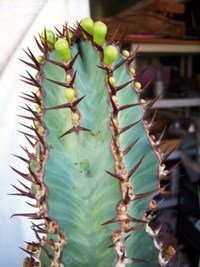
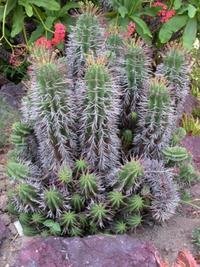
Euphorbia grandicornis Euphorbia virosa Euphorbia horrida
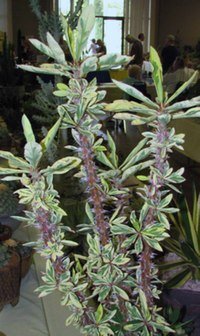
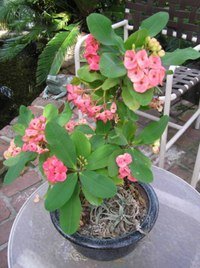
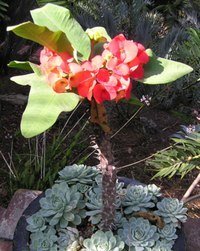
Euphorbia milii are often called cacti in the nursery trade
The following Euphorbias really are cactus look-alikes and are even named after some cactus genus because they look so much like them.
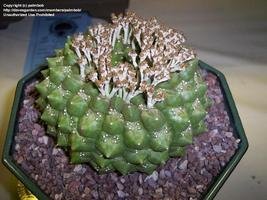
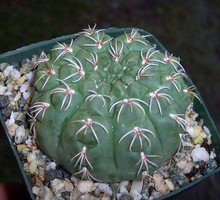
Euphorbia gymnocalycioides Gymnocalcyium pflanzii (a real cactus)
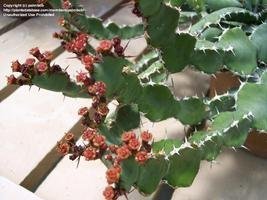
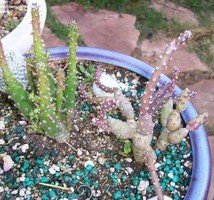
Euphorbia opuntioides several Opuntia relatives (real cacti)
These Euphorbia look so much like this cactus that a real cactus species, Neobuxbaumia euphorbioides, was named after the genus Euphorbia.

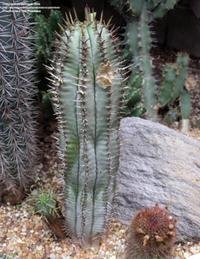
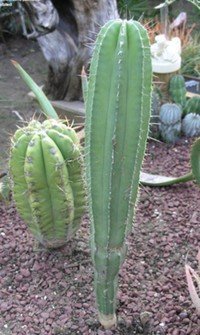
Euphorbia obesa (aka Baseball Cactus) Euphorbia inconstantina Neobuxbaumia euphorbioides (a real cactus)
Madagascar has its own population of succulent oddities, many which are intensely spiny and could possibly be confused with cacti (particularly some of the deciduous species in their leafless conditions). These plants, too, have evolved to fill similar arid climate niches as cacti fill in the Americas, and have evolved similar ways to protect themselves by developing spines. The three genera most commonly confused with cacti are Pachypodiums, Alluaudias and Didiereas.
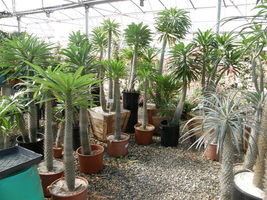
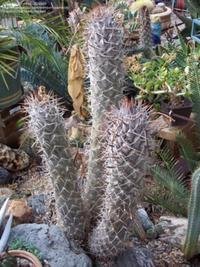
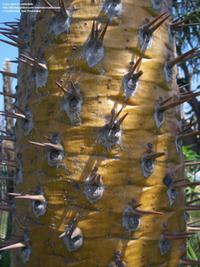
Pachypodiums are tall and spiny like some cacti; particularly when leafless (Pachypodium geayii); close up of Pachypodium spines
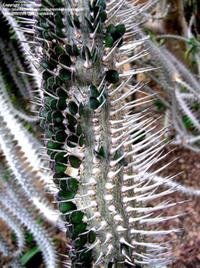
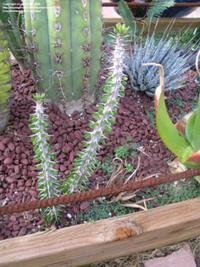 Alluaudias montagnacii and procera
Alluaudias montagnacii and procera
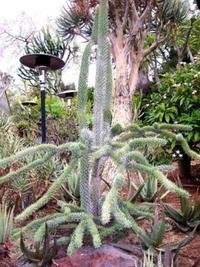
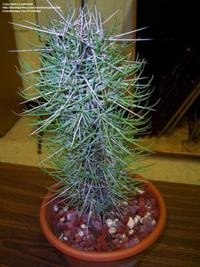 Didiereas trollii and madagascariensis
Didiereas trollii and madagascariensis
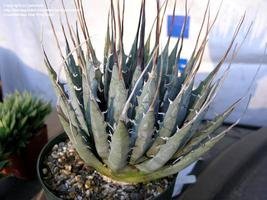
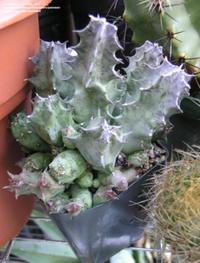
Even Agaves are sometimes called cacti (Agave utahensis); This Huernia is sometimes labeled as a cactus in some nurseries
Also there are a number of succulents that have the common name ‘cactus' attached to them that I personally don't see how anyone can confuse them with a cactus. Still, if you are new to succulents I can certainly see how that mistake can be made.
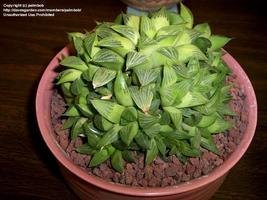
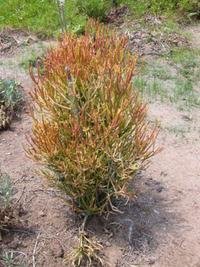

To me, none of these even closely resemble cacti, but their names suggest otherwise: Pickle cactus (Delopsperma echinatum); Pencil Cactus (Euphorbia tirucali); Star Cactus (Haworthia retusa)
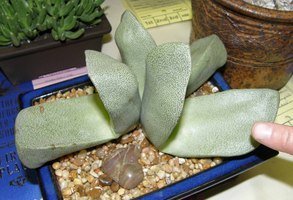
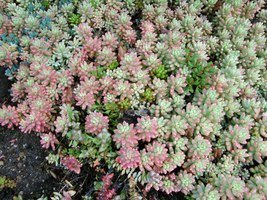
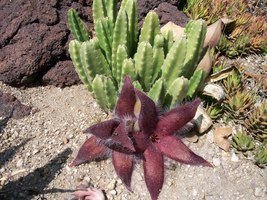
More 'cacti'-NOT!: Living Rock Cactus (Pleiospilos bulosii); Banana Cactus (Sedum rubrotinctum); Starfish Cacus (Stapelia gigantea)
How can one tell these plants are not cacti? Sometimes it is not too clear, but there are some rules of thumb that I use in case I am not sure. One is that all spinous cacti have areoles. Areoles are regularly spaced locations across the surface of a cactus, often raised knobs, arranged in rows, columns or sometimes seemingly randomly. Arising from these areoles are the spines of the cacti- anywhere from one to dozens of needle-like spines poke out from each areole. If one looks closely, one can see cactus spines come out of the areoles as though these spines were poking through from somewhere inside. One rarely gets the impression that cactus spines arise smoothly from the plant's surface as they they were mere pointed extensions of the cacti's skin. Cactus spines are nearly always thin, tubular and basically look like straight or curved needles and they all arise from one of these knobs. These cactus spines are actually modified leaves.
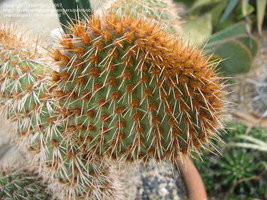
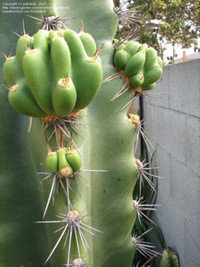
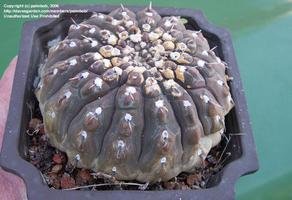
These three cacti have obvious areolae (Opuntia pycnantha, Neoraimondia and Gymnocalycium pflanzii) where all their spines arise
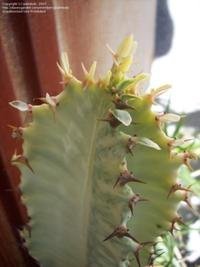
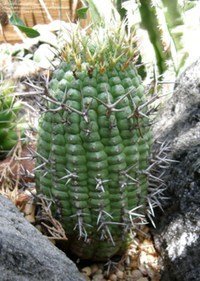
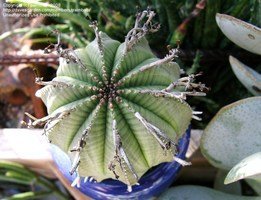
Euphorbia spines on Euphorbia ammak (see how these arise from the leaf bases?); Euphorbia stellispina; and Euphorbia vallida (these 'spines' are actaully dried, retained flower stems)
The spines on Euphorbias are not modified leaves, but are either projections arising from leaf bases (or where leaves eventually grow), or are old, retained flower stems. Usually these spines are not needle-like, but thicker, often with wide bases and relatively short, though they can certainly be quite sharp. They are usually paired or solitary (though occasionally some Euphorbia will have clusters of three or four spines). Most Euphorbias that have needle-like spines have solitary spines, not clusters of them. And no Euphorbia have areoles, though some have somewhat raised bumps which smoothly taper into the spines. Rarely do Euphorbia spines come from knobs as though the spines were poking out through the plant's surface (the way cactus spines always look). The spines of Pachypodiums, Alluaudias and Didiereas rarely arise from a bump, and most smoothly taper from the surface of the plant without interruption as though they were mere pointed extensions of the plant's surface.
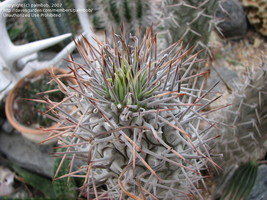
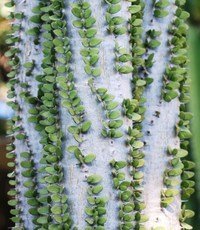
Pachypodium spines, also arising from just below leaves; Alluauadia spines arise from right beside the leaves
Also, if you happen to see a plant flowering, you can tell a cactus apart these other plants fairly easily. Cactus flowers are usually large, flamboyant and complex, having all the parts of flowers seen on other angiosperms, and all arise from the areoles as well. Euphorbia flowers are much less complex and (with a few exceptions) are dinky, succulent and sometimes sticky. Pachypodium can have large, colorful flowers, but usually these plants also have large, non-succulent leaves (something cacti almost never have). Alluaudia have tuft-like dinky flowers that are never colorful.
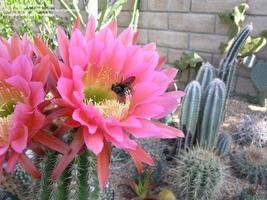
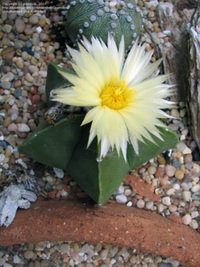
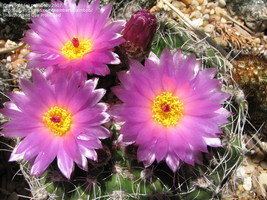
Cactus flowers in my yard: Echinopsis 'Flying Saucer', Astrophytym myriostigma var nudum, and Parodia werneri
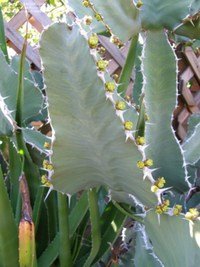
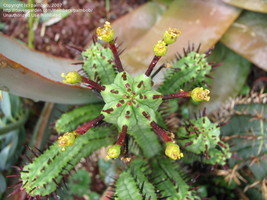
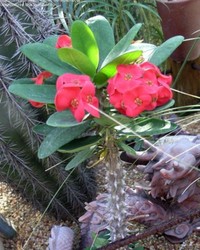
Euphorbia flowers on unknown species, Euphorbia enopla and on one of the more spectacular of the flowering Euphorbias, Euphorbia milii- still, nothing as impressive as a good cactus flower

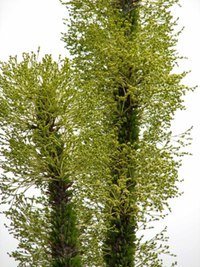
Pachypoidum flowers can be nice but still not as impressive as most cactus flowers. Alluauadia flowers look nothing like cactus flowers
In my previous article the lesson was that just because something looks nothing like a cactus, it doesn't mean it's not a cactus. And here I guess the lesson is that just because something looks like it should be called a cactus, it doesn't mean it is a cactus. And some things actually called cacti, are not. Now isn't that all clear?
Copyright © www.100flowers.win Botanic Garden All Rights Reserved